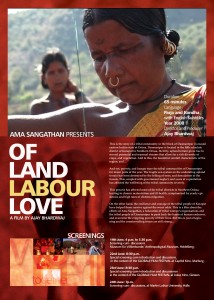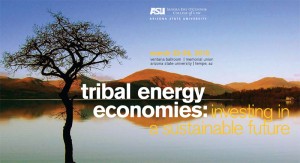The Real Avatar: Story of a Sacred Mountain

> ESTC Ecotourism 2010 Conference <
> Indogenous Peoples Ressources <
> TRIBAL ENERGY ECONOMIC CONFERENCE <
The Kondha are indigenous tribal groups of India. Unlike other tribal groups of India, the Dongria Kondh are accomplished horticulturists, farming on the mountain ranges of Niyamgiri. Their highest concentration is found in the blocks of Rayagada, Kashipur, Kalyansinghpur, Bissamcuttack and Muniguda.
One sub-group of kondhas is the Dongria Kondhas. They inhabit the plateaus of Niyamgiri hill ranges which cover parts of Rayagada and Koraput and Kalahandi districts. Their major concentration is found in the blocks of Kalyansinghpur, Bissamcuttack and Muniguda. They are called Dongria or dweller of donger („hill“ in Oriya) and love to settle in higher altitudes due to their economic demands. The Niyamgiri Hills where the Dongria Kondh dwell are covered by superb natural forests and home to many rare species like the Golden Gecko and the Giant Squirrel. The Dongria Kondh call themselves Jharnia meaning those who live by the Jharana (streams). Hundreds of perennial streams flow from Niyamgiri hill, and there are hundreds of Dongria villages by the streams. The Dongria are the protectors of these streams, hills and jungles and are revered by people in the nearby plains. Read More > HERE <
Die Globalisierung dringt heute gewalttätig und rücksichtslos bis in die letzten Gebiete vor, die noch nicht direkt von Staat, Wirtschaft und Kapital kontrolliert werden. Diese Gebiete sind meist Regionen, in denen verschiedene indigene Gemeinschaften leben, beispielsweise in Indien, Brasilien, Botswana, Ecuador oder in Venezuela. Für einige dieser Adivasi-Gemeinschaften (indigene Gemeinschaften) hat sich der gewaltsame Einzug „der Zivilisation“ in ihr Leben erst vor kurzem vollzogen. Die traditionelle Lebensweise vieler Adivasis wurde auf unterschiedliche Weise untergraben, zum Teil bereits von den Kräften des Marktes, Kapitals und des Staates zerstört.
Eine dieser zahlreichen bedrohten Adivasiregionen der Welt ist Kashipur im Bundesstaat Orissa in Indien. In dieser Region leben die drei Adivasi-Gemeinschaften Kondha, Jhodia-Paraja und Pengo. Aufgrund der Industrialisierung wurden hier bereits in einem Radius von 100km große Waldgebiete zerstört, um die nahegelegenen Städte und die Industrie mit Nutzholz zu beliefern. Dies ging einher mit dem Bau von Bahngleisen und Straßen und bedeutete das Eindringen „zivilisierter“ Außenseiter in die Region, die Ansiedlung staatlicher Institutionen, einschließlich der Polizei, Bürokratie, der Händler und Geldverleiher. Mehr lesen. > HIER <
The Dongria and other local Kondh people are resisting „Vedanta“ and are determined to save Niyamgiri from becoming an industrial wasteland. Other Kondh groups are already suffering due to a bauxite refinery, built and operated by „Vedanta“, at the base of the Niyamgiri Hills. Villagers who have been removed from their homes for the refinery have suffered threats and intimidation. They have lost both their land and their means of supporting themselves.
They are also suffering from health problems due to pollution from the refinery, which they blame for skin problems, livestock diseases and crop damage.
> Tribal survival: the Dongria Kondh < > MINING IN ORISSA utubechannel <
The Niyamgiri Hills are home to the more than 8,000 Dongria Kondh, whose lifestyle and religion have helped nurture the area’s dense forests and unusually rich wildlife.
The Dongria farm the hill slopes, grow crops in among the forest, and gather wild fruit, flowers and leaves for sale.
They call themselves Jharnia, meaning ‘protector of streams’, because they protect their sacred mountain and the life-giving rivers that rise within its thick forests.
The „Vedanta’s“ open pit mine would destroy the forests, disrupt the rivers and spell the end for the Dongria Kondh as a distinct people.
At the centre of the struggle is the Dongria’s sacred mountain, the ‘mountain of law’. The Dongrias worship the top of the mountain as the seat of their god and protect the forests there.
The „Vedanta“ Resources wants to mine the bauxite from the top of the same mountain. The Dongria Kondh would lose their livelihood, their identity and the sanctity of their most religious site.
About First Peoples – In January 2009, the Andrew W. Mellon Foundation awarded four university presses a collaborative grant that established an innovative partnership. The grant supports the publication of 40 books over four years and will create the means for the presses to collaborate in their mission of furthering scholarly communication in the field of Indigenous studies. Our publishing initiative seeks the best and most robust scholarship by junior authors whose publications will contribute to the development of the field.
Vision – In January 2009, the Andrew W. Mellon Foundation awarded four university presses a collaborative grant that established an innovative partnership. The grant supports the publication of 40 books over four years and will create the means for the presses to collaborate in their mission of furthering scholarly communication in the field of Indigenous studies. Our publishing initiative seeks the best and most robust scholarship by junior authors whose publications will contribute to the development of the field. Learn More
Press Expertise – The partner presses on this initiative bring together expertise in regional, national, and global Indigenous issues, creating a publishing program that reaches beyond traditional geographically bound or even discipline-bound borders. Learn More
Author Benefits – The collaborating presses seek works by authors that reflect the expanding field of Indigenous studies. Authors who are selected to participate in our program will receive many benefits, thanks to funding from the grant.

www.firstpeoplesnewdirections.org
Tribal Energy Economies: Investing in a Sustainable Future – CLE CONFERENCE – Domestic energy production is undergoing a major evolution as we explore and expand traditional and new energy sources. Tribes are well-positioned to lead our nation into this next generation of development.
This conference will bring together elected and community leaders from Indian country, financing and energy industry experts, attorneys, and those in academia to chart a course that will allow tribes to increase their leverage now and create sustainable energy economies for the future. We will look at strategic plans to promote investment and to prepare the tribes for a transition towards truly sustainable economies.
We will address the traditional energies: coal, natural gas, oil, and segue to alternative and renewable energies and beyond. This conference will be a true exchange of ideas by experts in traditional, renewable, and alternative energies, as well as engineers, economists, attorneys, and financial and legislative specialists. It will look at the challenges of developing long-term economies in these energies, including the economic and cultural issues associated with large-scale build-outs on tribal lands.
The mission of the conference is to inspire the attendees not only to envision the future for the tribe’s energy economies but to also identify a clear path to success and bring together people who can contribute to achieve that success.
- University of Arizona Press
- University of Minnesota Press
- University of North Carolina Press
- Oregon State University Press
- The Andrew W. Mellon Foundation
Comments are closed.